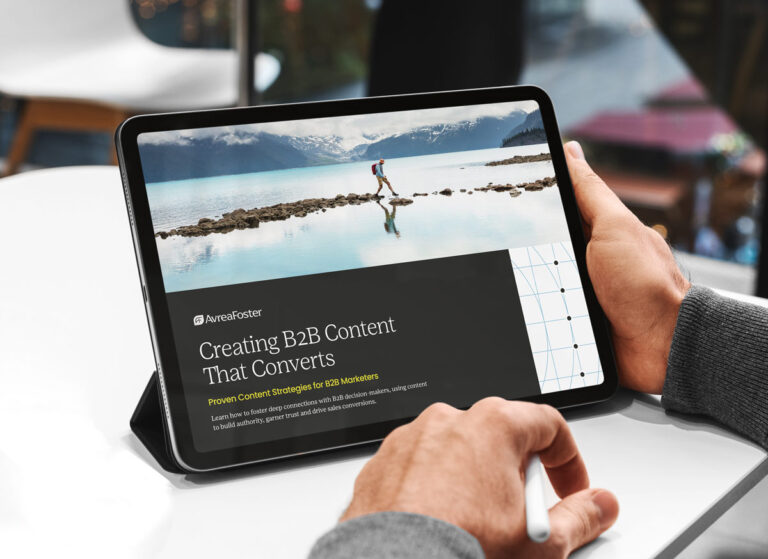There are so many factors to consider when one B2B brand merges with another — how it will impact sales, operations and finance. And while those are important, what is most fundamental to a successful integration and, subsequently, the future success of the company is the brand. The brand is a story and a visual identity, but it is also a culture — a way of doing things. It is that thing that inspires loyalty from your customers and gives your products or services instant credibility. It can unite or polarize your most valuable audiences — including employees.
After a merger or acquisition is made public, it’s likely portions of your workforce are concerned about job security. There may be questions about technology integration or who owns which sales markets. But if you could take all the emotion out of your new working climate, you would be left with one very good question: Who are we now? Odds are your customers are wondering the same. Take time to reassess the answer through what we at AvreaFoster call discovery. Our highly honed process includes four strategic pursuits:
01
STAKEHOLDER INTERVIEWS
This involves having frank, one-on-one or small-group conversations with key divisions on both sides of the merger — from leadership to sales, operations to human resources. It should also include external stakeholders — customers, partners or investors. You will start to see some recurring themes that reveal gaps in alignment between the acquired and legacy brands, whether related to business vision and go-to-market strategies or how customers interpret the brands and what the merger could mean to them. It’s worth noting that short-form surveys can be deployed to gain additional insights and/or substantiate qualitative research, but they are no substitute for organic dialogue.
02
MARKET LANDSCAPE
Your newly merged brand will be closely scrutinized by competitors that want to thwart and/or mimic the company’s sales strategy (to say nothing of poaching employees). What’s more, your peer landscape may have shifted based on new services, products or markets that the merging brand has brought with them. Taking a fresh look at your competitive landscape is critical to uncovering differentiation opportunities, whether related to brand position or product architecture, visual identity or recruiting. Through a digital audit, we can also address how peers are approaching UX, SEO and paid search, ensuring your new and current customers find your brand — not a competitor’s.
03
INDUSTRY TRENDS
Maybe your business didn’t change industries with the merger, but that doesn’t mean your current industry isn’t changing. In fact, your business might be leading the change. Analyzing what has shifted in the industry over the last several years can not only help you understand where and why customer expectations have shifted, but also where the industry needs to change. By anticipating changes to regulations, material or supply chain issues, or consolidation (no indictment), the company can shape the brand messages your stakeholders want to hear and those you need to communicate as an industry leader.
04
Audience segmentation
Through the aforementioned customer interviews, you’ve learned how prospects make decisions and where the company might influence their thinking. You have also identified differences in your customer base. Integration offers an ideal opportunity to revisit your customer segmentation strategy. This may not be as clear-cut as it’s first interpreted. Many companies segment based on need, grouping customers into product- or service-oriented segments that easily translate into current sales operations or a slightly modified website journey. But this strategy has blind spots. Sometimes a market or industry segmentation is more appropriate to demonstrate specialized expertise. One must also consider how the full complement of the business’ newly augmented portfolio might change the customer profile to whom the brand appeals. Or perhaps the new offering has brought with it a higher price tag that has expanded the number of decision-makers the brand must satisfy. All these elements impact your business and sales strategy, which influences — at minimum — your brand story and targeted messaging, and likely the digital journey and content strategy.
Unveiling a Comprehensive Strategy
All these insights coalesce into a big-picture view — a mapping of evidence that aligns the business and brand strategy through a refreshed value proposition or positioning statement, a new or refined vision, mission and values set, and a comprehensive messaging playbook that brings new energy to your business and unites all team members under one authentic story. This is the foundation on which all integration strategies are built. Any gaps or misalignments can compromise the success of future efforts.
Next Steps
Now that you understand the process and value of evolving brand messaging, it’s time to look at the visual brand identity. Read part two in this three-part series: Assessing the Post-Merger Brand Image.
AvreaFoster has significant experience and interesting case studies to share with brand and marking leaders interested in understanding more about managing brand momentum post M&A. Let’s talk.



